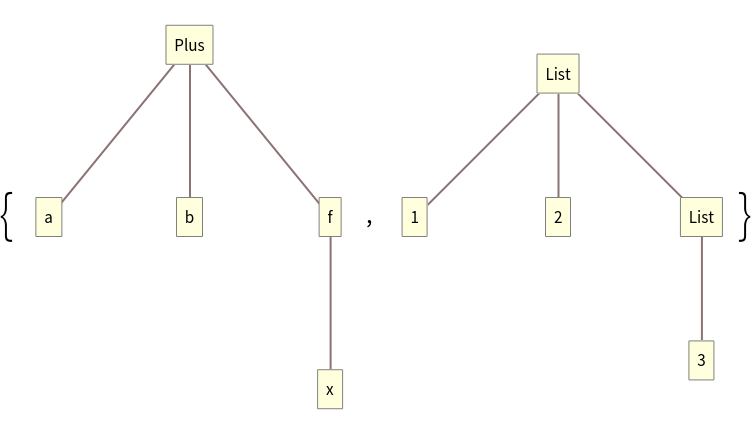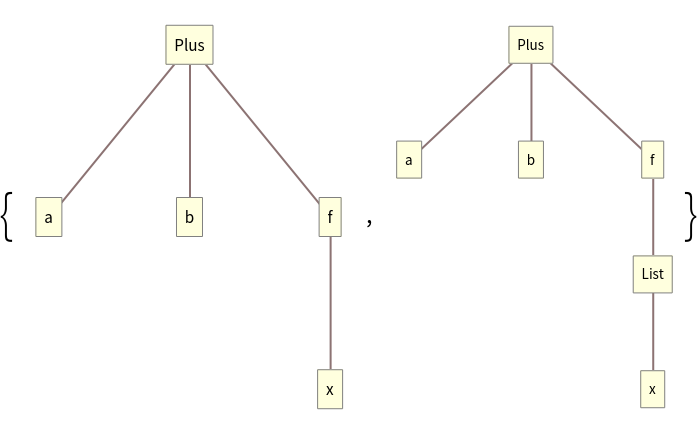Scope (5)
Associations must agree on keys:
A reordering of keys only changes the shape if the corresponding values have a different shape:
Compare expressions without evaluation:
The Unevaluated wrapper is not considered part of the expression:
Any number of arguments can be given:
Properties and Relations (6)
An expression is always the same shape as itself, so SameExpressionShapeQ is always true for a single argument:
SameExpressionShapeQ[] is defined to be True:
This is consistent with the behavior of SameQ:
For normal expressions, SameExpressionShapeQ[expr1,…,exprn] is effectively equivalent to testing if all the ExpressionGraph[expri] are equivalent under IsomorphicGraphQ:
Compare using TreeForm:
These two have different shapes:
Compare using TreeForm:
Represent the underlying "shape" of expressions by replacing all atomic values with one identical value:
These have the same shape:
These do not:
Highlight differences:
Another way to understand the shape of a normal expression is by looking at the positions of all subexpressions:
When the positions are the same, the expressions have the same shape:
For associations to be considered the same shape, their corresponding parts must be the same shape whether indexed by key or numeric position:
Check subexpressions by key indexing:
Check subexpressions by their ordinal positions:
Since both methods of indexing are in agreement, these have the same shape:
Here is another Association that only differs in key order:
Check subexpressions by key indexing:
Check subexpressions by their ordinal positions:
It is not considered the same shape, since indexing by numeric position yields incompatible subexpressions:
Possible Issues (2)
For associations, SameExpressionShapeQ considers keys to be structural positions rather than subexpressions:
For lists of rules, the keys are normal subexpressions:
![expr1 = a + b + f[x];
expr2 = {1, 2, {3}};
expr3 = a + b + f[{x}];](https://www.wolframcloud.com/obj/resourcesystem/images/987/9877d563-50cb-459f-9917-0e21f81ede53/14aa3e0320b5de4f.png)


![expr1 = h[][f[x, g[y, z]]];
expr2 = f[][{1, 2 + x}];
expr3 = f[g[], g[y, z]];](https://www.wolframcloud.com/obj/resourcesystem/images/987/9877d563-50cb-459f-9917-0e21f81ede53/11537ce6773b5e2d.png)
![expr1 = h[][f[x, g[y, z]]];
expr2 = f[][{1, 2 + x}];
expr3 = f[g[], g[y, z]];](https://www.wolframcloud.com/obj/resourcesystem/images/987/9877d563-50cb-459f-9917-0e21f81ede53/5faa4b5e663c986e.png)